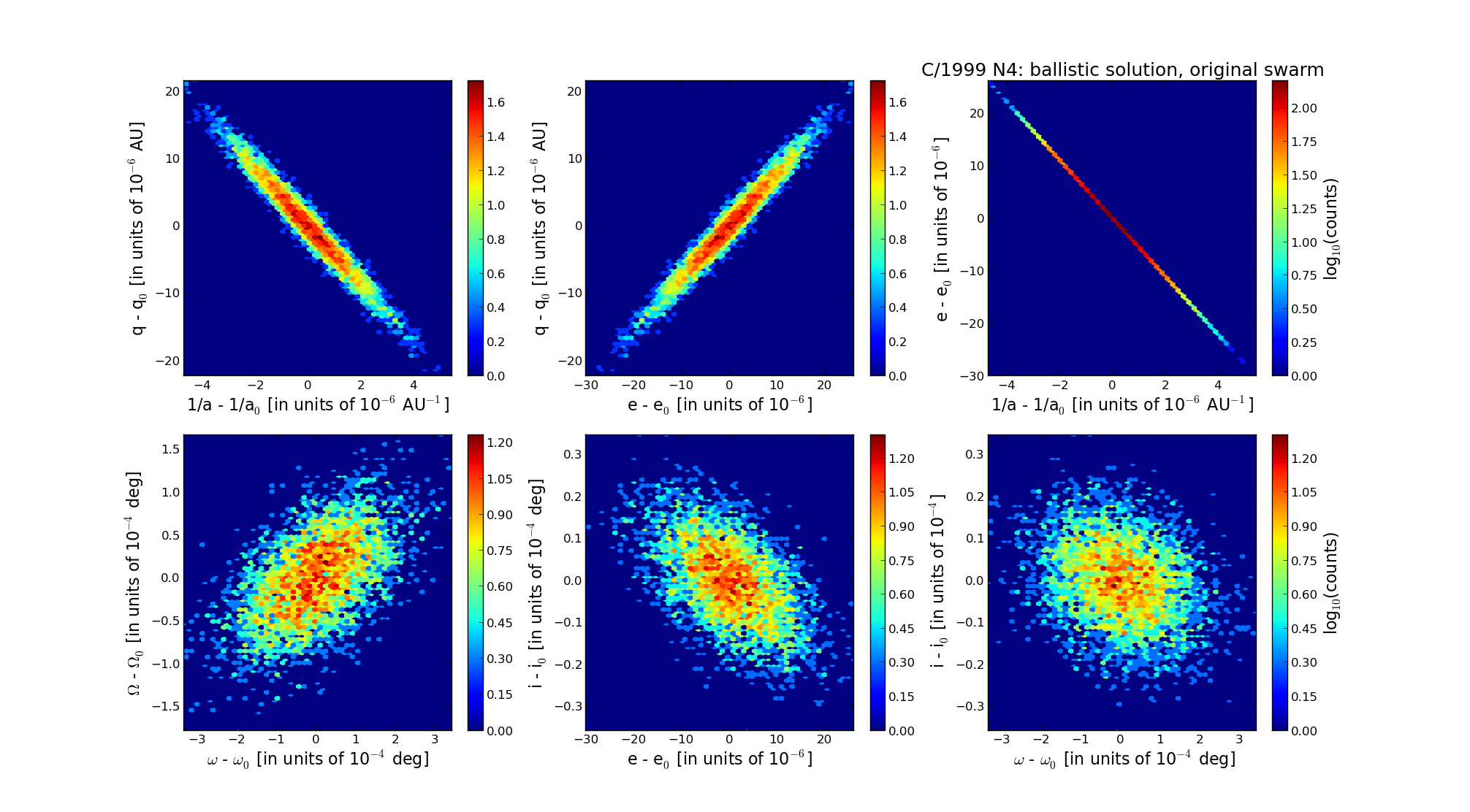| Solar System Dynamics & Planetology Group |
 |
C/1999 N4 LINEAR |  |
| Solar System Dynamics & Planetology Group |
 |
C/1999 N4 LINEAR |  |
| number of observations | 345 |
| number of residuals | 661 |
| data interval | 1998 Aug. 27 — 2002 May 6 |
| rms [arcsec] | 0.53 |
| orbit quality class | 1a |
| Epoch (TT) | 20000516.0 | = JD 2451680.5 |
| time of perihelion passage (TT) | 20000523.734622 | ± 0.000816 |
| perihelion distance | 5.50473873 | ± 0.00000628 |
| eccentricity | 1.00419246 | ± 0.00000778 |
| argument of perihelion [deg] | 90.429037 | ± 0.000097 |
| longitude of the ascending node [deg] | 345.901293 | ± 0.000045 |
| inclination [deg] | 156.922915 | ± 0.000009 |
| inverse semimajor axis [10-6 au-1] | -761.61 | ± 1.41 |

| Epoch (TT) | 16930704 | |
| time of perihelion passage (TT) | 20000523.006014 | ± 0.000829 |
| perihelion distance | 5.51393119 | ± 0.00000622 |
| eccentricity | 0.99961003 | ± 0.00000788 |
| argument of perihelion [deg] | 90.320748 | ± 0.000100 |
| longitude of the ascending node [deg] | 345.906966 | ± 0.000046 |
| inclination [deg] | 156.940933 | ± 0.000009 |
| inverse semimajor axis [10-6 au-1] | 70.73 | ± 1.43 |
| Epoch (TT) | 23060910 | |
| time of perihelion passage (TT) | 20000522.058157 | ± 0.000849 |
| perihelion distance | 5.51244642 | ± 0.00000630 |
| eccentricity | 0.99985465 | ± 0.00000787 |
| argument of perihelion [deg] | 90.432807 | ± 0.000099 |
| longitude of the ascending node [deg] | 345.955755 | ± 0.000046 |
| inclination [deg] | 156.948399 | ± 0.000009 |
| inverse semimajor axis [10-6 au-1] | 26.37 | ± 1.43 |